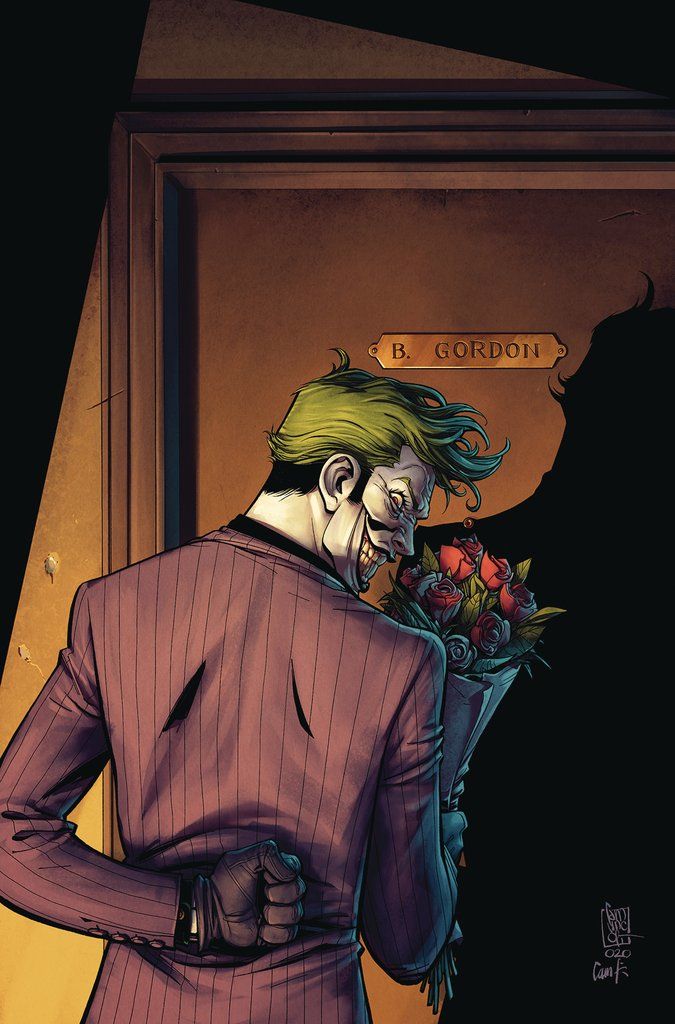Create a free profile to get unlimited access to exclusive videos, sweepstakes, and more!
DC Comics needs to let Barbara Gordon (and her fans) move on from The Killing Joke

WARNING: This piece contains discussion of sexual assault and trauma.
A knock on the door, a gunshot ripping through a peaceful afternoon, the sadistic click of a camera's shutter as it captures the worst moment in a young woman's life. These are the sights and sounds that come to mind for fans of Barbara Gordon, the current Batgirl for DC Comics, whenever someone forces them to think about what happened to their favorite character in the pages of Alan Moore and Brian Bolland's The Killing Joke in 1988. The images of Barbara Gordon broken, crying, bleeding, and then sexually assaulted by the Joker are an ever-present ghost in the world of Batgirl, one that has haunted fans of the character for more than 30 years, and which seems destined to return again and again despite all efforts to move on.
Such is the case for the latest Joker storyline coming to comic collections in 2020. Joker War was announced by DC Comics in January of this year, itself part of the company's celebration of the character's 80 years causing mayhem in the streets of Gotham City. The story, which begins in the pages of the ongoing Batman and Detective Comics series of books, promises to cross over with every member of the Bat-Family, drawing the likes of Dick Grayson, Jason Todd, Tim Drake, and yes, Barbara Gordon, into its pages. In late February, details about the various crossover events were released by the publisher, including cover art, among them the art for Batgirl #47, which is a direct reference to the opening panels of The Killing Joke. The short synopsis for the issue leaves little doubt that this story will force Barbara Gordon to once again relive the trauma she experienced at the hands of the Clown Prince of Crime: "Knock knock! Who's there? The Joker. The Joker who? The Joker who's here to have a nice chat with Barbara Gordon! Don't miss this devastating tie-in to Joker War!"
It's a compelling description for fans of the villain and the story it references. But is it necessary? In the decades since it was written, The Killing Joke has become a Pandora's box that is unlikely ever to be closed. The story quickly became the basis for nearly every big-screen adaptation of the villain, from Jack Nicolson in Batman (1989) to Heath Ledger in The Dark Knight (2008), all the way to Joaquin Phoenix's most recent performance in Joker (2019). It has been adapted into animation, video games, and a novelization released for the 30th anniversary of the book in 2018.
This latest cover isn't even the first time in recent memory that DC Comics has invoked the memory of The Killing Joke and forced the heroine to relive those events. In 2015, a variant cover for Batgirl #41 was pulled from production after an outcry from Batgirl fans. The cover, by artist Rafael Albuquerque, depicts the titular hero — a terrified look on her face, a tear in her eye, and a painted-on smile — held from behind by the Joker, dressed as he was on that day, a gun in one hand draped over her shoulder, his other hand in the form of a gun on her face. The cover had nothing to do with the story inside its pages, and its gruesome depiction was at odds with a book that was attempting to find a lighter tone after moving the character out of the center of Gotham City and into a borough called Burnside. Albuquerque had the cover pulled himself after four days of complaints from readers, saying, "my intention was never to hurt or upset anyone through my art."
But it's what he said earlier in the statement that delivers perhaps a stronger message about the greater issue in play when it comes to the constant references to this decades-old story. When discussing his reasoning for creating the piece, he said: "For me, it was just a creepy cover that brought up something from the character's past that I was able to interpret artistically."
That's all it was. Just a "creepy cover." No greater purpose, no grand design. The trauma of a female character was just something fun, an homage to a book he admired and a relationship from which Barbara Gordon will never be free. Fans of The Killing Joke see the book as a monumental feat of storytelling, the quintessential Joker story. They don't see what Batgirl fans do, a book that strips away the agency of a longstanding female hero in the service of multiple men who surround her. They don't see it, because it is not her story.
Oddly enough, attempts to correct the way Barbara was treated in The Killing Joke were part of what ultimately cemented the story in DC's canon. The book was not initially intended to affect the larger DC Universe, though its reception likely would have led to its being referenced again and again regardless. Immediately after the book was released, writers John Ostrander and Kim Yale asked if they could have the character, wheelchair and all, for a little series they had been working on since the year before, Suicide Squad. Ostrander and Yale eventually introduced their readers to a newly reimagined version of Babs, and Oracle was born, introduced in a cover that itself invoked that of the book where she lost the use of her legs.
Ostrander and Yale took great pains to construct a character that could withstand an existence outside their single story, and they were successful, as Oracle went on to play a major role in Batman: No Man's Land before eventually landing her own series alongside the Black Canary when Birds of Prey was launched in the late '90s. Ostrander and Yale were also the first to bring back the events of The Killing Joke when they penned Oracle: Year One, an issue of The Batman Chronicles. The one-shot story did what The Killing Joke failed to, showing the events of that day from the perspective of the only character who suffered a lasting effect. Years after she was shot and tortured by the Joker, Barbara Gordon finally got to tell her side of the story, and in those few pages Ostrander and Yale allowed the former Batgirl to get angry, venting all the frustrations that fans of the character had been voicing since the moment the bullet severed her spine. They gave the story back to Barbara.
Since then, Barbara has faced down the Joker a handful of times in the pages of her own book, and each time the writers and artists have done their best to tell a story about a woman dealing with residual trauma from an event over which she had no control. Birds of Prey #16, the first meeting between the two since The Killing Joke, allowed Barbara to maintain the upper hand by interrogating the Joker through glass. The events of the Death of the Family crossover, which occurred just one year after DC decided to put Barbara back in the cape and cowl, saw Barbara defying Batman and vowing revenge on a man who took so much from her, her anger and struggle with PTSD a defining part of that story.
The custodians of Barbara Gordon have tried, to varying degrees, to make something positive out of terrible events. They've created a character who became an icon to wheelchair users and other disabled people who never get to see themselves as heroes. And in the years since she was taken out of the chair, the writers, artists, and editors who have shepherded that story have done what they can to give the character an arc that both honors her past while trying to build toward a future in which she moves on from that trauma. But they seem to be the only ones concerned with that arc.
Barbara Gordon (and her fans) can only move on if DC Comics lets her do so. At the same time that those creators have worked tirelessly to give her a story with meaning, DC has continued to rehash the past in ways that only serve to reinforce the feelings of Batman and Joker fans at the expense of Batgirl's. While writers on Batgirl and Birds of Prey books have spent decades trying to rewrite the story of The Killing Joke to allow Barbara some level of power, DC has ultimately refused to release its iron grip on the original story. Whether through a dramatized version of the pivotal scene between Joker and Barbara in Batman: Arkham Knight, superficial references through comic book covers or downloadable skins for Injustice: Gods Among Us, the offensive attempt to produce an R-rated animated film based on the book, and even the decision to re-release the book itself in varying formats over the years, DC shows no desire to honor the work those creators have put in.
Instead, Batgirl and her readers continue to find themselves caught in an endless cycle of trauma and rebirth, forever reminded that even 30 years later, those who make the decisions at DC seem to value the growth of some characters more than others.



























